All about pilasters
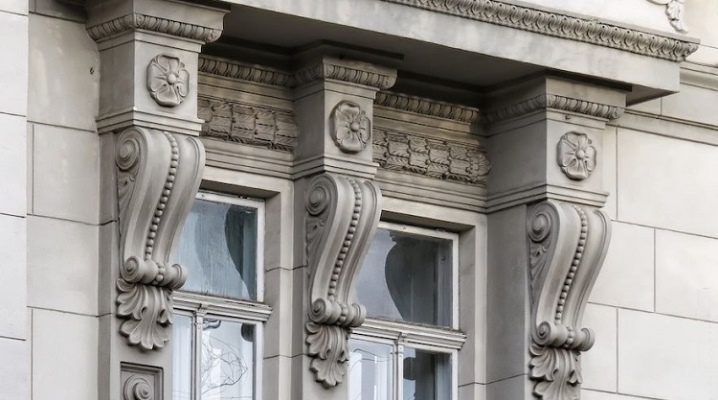
In the process of designing and constructing buildings, architects pay attention not only to the functional and practical, but also to the decorative and design side. Thus, appropriate decorative elements give the building a presentable appearance. Pilasters are popular and widespread in this regard. Today in our material we will talk in more detail about such architectural details.
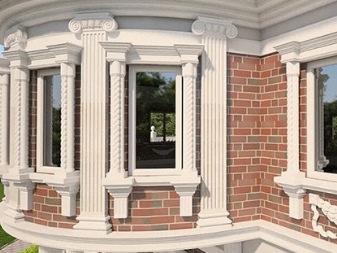
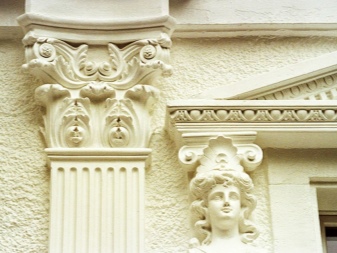
What it is?
First you need to understand what pilasters are. In fact, these are protrusions on the wall, which have a common side with it (this characteristic of pilasters distinguishes them from columns) and are widely used in architecture and construction. It is important to note the fact that this architectural element does not exert any pressure on the wall, therefore it is widely used to decorate both external and internal walls of any room.
In appearance, the pilaster resembles a column. Moreover, these design elements can have different shapes and sizes. They are used to decorate facades, interior walls, doors, windows and more.
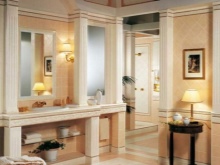
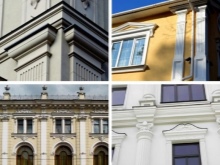
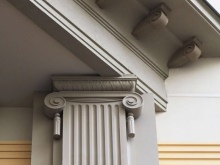
If we approach the issue of studying pilasters from an architectural point of view, then it is necessary to highlight several key components:
- base (or base) - it is on this structure that all other elements are located and fixed, its dimensions can reach an indicator of 0.5 m;
- pilaster post is its main part, there are carved and smooth varieties of this element of the exterior;
- small cap - this is a part that performs the main decorative role, in connection with which it can be decorated and decorated with a variety of patterns.
In order for the pilaster to look holistic and harmonious, all its details must be combined with each other (in color, size, shape). Generally speaking, pilasters as architectural details have a rather ancient, long and interesting history of their appearance and development. For the first time, we can talk about the use of these elements in the process of building and decorating houses since Antiquity. Details were especially popular in Ancient Greece (later in Ancient Rome).

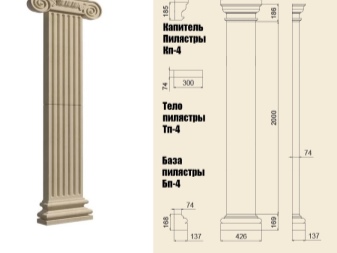
Initially, pilasters performed an exclusively functional role and were a kind of strengthening of load-bearing structures. Due to this purpose, little attention was paid to these architectural elements from a decorative point of view. Pilasters were mounted only on the facades of buildings and had an exclusively rectangular shape; in the process of their manufacture, natural stone was used. During the Renaissance, architects and designers revised the purpose of pilasters and began to construct similar structures not only outside, but also inside the premises.
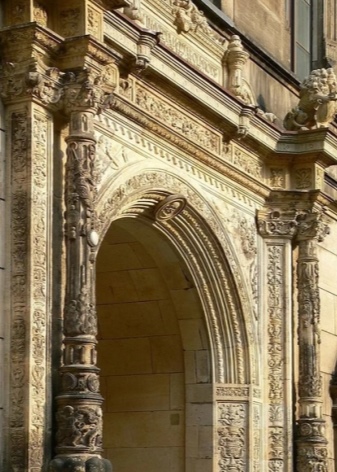

At the same time, not only walls were decorated with pilasters, but also furniture, paintings and much more. Today, pilasters continue to be popular and widespread decorative elements that are used by designers and architects to decorate rooms.
At the same time, these elements have an attractive appearance and successfully complement some interior styles (for example, classicism, baroque).
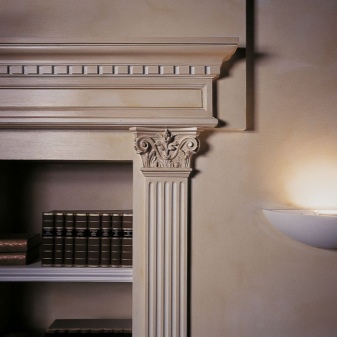
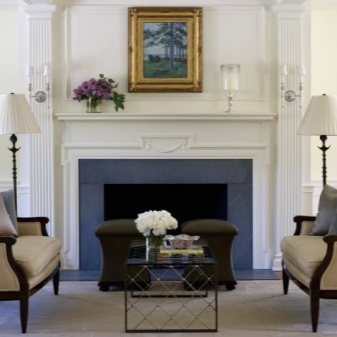
Let's consider several main functions that pilasters perform indoors:
- strengthening the wall surface;
- division and zoning of space (for example, using these elements, you can divide the kitchen and dining area);
- hiding flaws (for example, defects in finishing or communication wires);
- decoration and decoration.
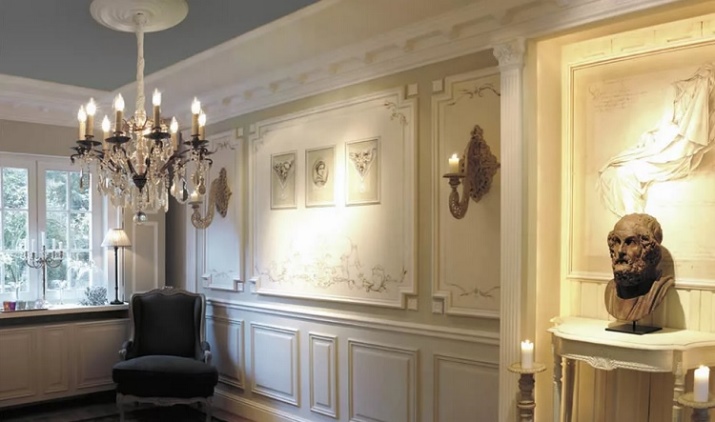
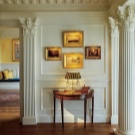
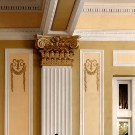
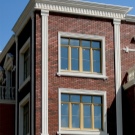

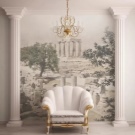
Views
Today on the market you can find a wide variety of decorative pilasters: with flutes, angular, pylon type, rusticated, fluted and other options. Due to such a wide variety of such architectural elements, it can be quite difficult for the user to make a choice.
For the convenience of buyers, manufacturers have adopted a classification of pilasters, which is based on the appearance of the pillar. There are 3 main categories for this indicator.

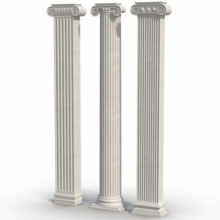

Rectangular
Rectangular pilasters are considered modern (or modern). They are able to harmoniously fit into a variety of interiors. Moreover, they are often used to strengthen the wall, as well as for the purpose of zoning space.

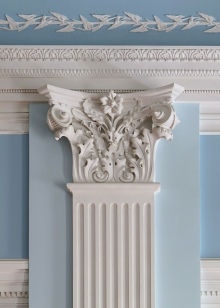
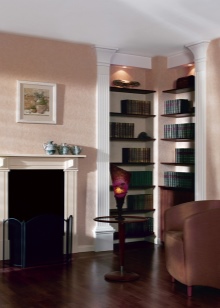
Semicircular
Semicircular types of pilasters can be attributed to constructions of the classical type. In appearance, such pilasters in the interior of the room may resemble a column that is half recessed into the wall.
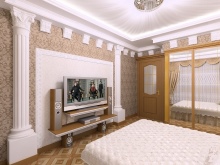
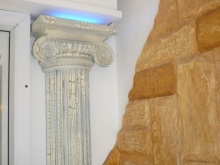
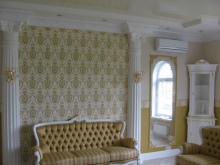
Complex
Complex pilasters can have different shapes, different reliefs and unique shapes (which, in turn, can change in different parts of the pillar). The choice of these elements must be approached with extreme caution, since they are quite difficult to fit into the usual classic interior.
Thus, each user will be able to choose such pilasters that will harmoniously fit into the interior that is inherent in his home. You can make the choice of pilasters yourself or resort to the help of professional designers, so as not to be mistaken and in the future do not regret your purchase.
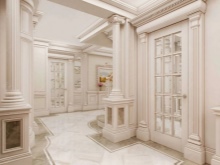
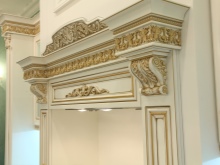
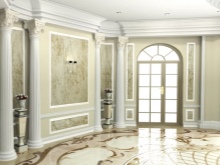
Materials (edit)
In addition to the variety of types of pilasters in shape, these architectural elements also differ in material of manufacture. In the process of choosing and purchasing pilasters, especially close attention should be paid to what raw materials these architectural elements are made of. This factor will have a decisive influence on how strong and reliable these elements will be, as well as how long they will last.

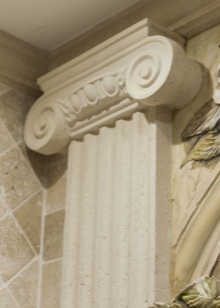
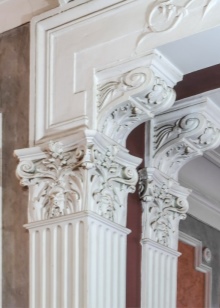
Popular materials for making pilasters:
- marble;
- granite;
- wood;
- polyurethane;
- Styrofoam;
- gypsum;
- MDF;
- PVC;
- brick;
- stucco molding;
- drywall.
It should be noted that today the most common and popular are pilasters, which are made not of natural, but of artificial materials. Most often this is due to their cost, as well as strength and reliability. Accordingly, previously popular plasterboard elements or wooden variations are losing their relevance.
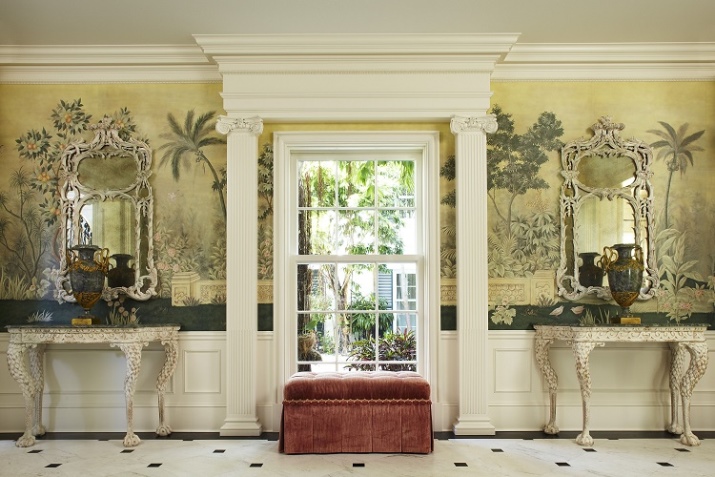
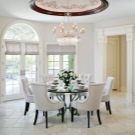

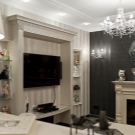
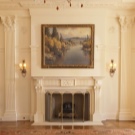

How are they used?
The use of pilasters is relevant in various areas of design. So, common, popular and demanded among consumers are pilasters on the facade, on the wall, on the door. As mentioned above, initially pilasters were perceived exclusively as facade fortifications. For the most part, they fulfilled functional significance. However, today the state of affairs has changed significantly.
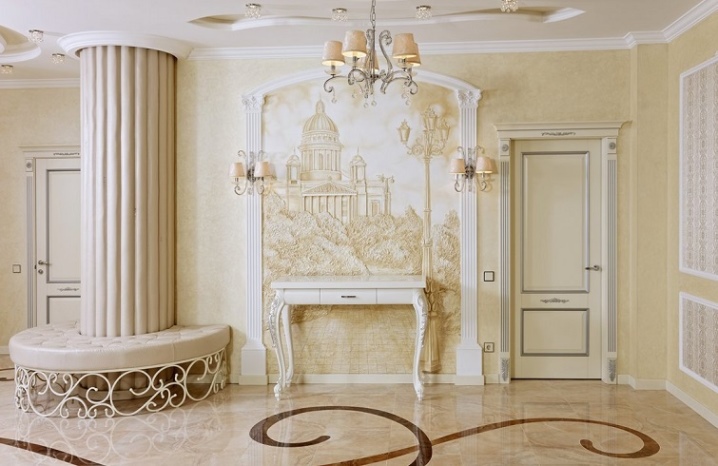
This is primarily due to the fact that modern buildings do not require additional fortifications in the form of pilasters., since they are built on the basis and taking into account all the latest technological developments, and the process of direct construction itself is of high quality. In this regard, it can be concluded that today pilasters are decorative and design elements that are popular among designers.
Similar designs can be installed in the doorway, in the living room.
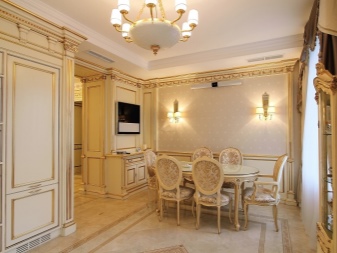
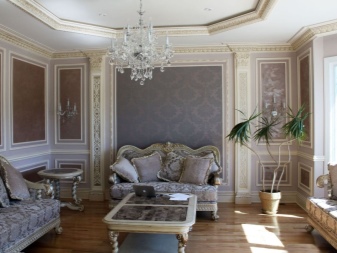
Today, the use of pilasters is relevant in a number of cases:
- to give rigidity to a particular structure (for this, parts can be placed at the corners of buildings);
- for zoning (this is especially true if you live in a studio apartment or if the rooms of your house are large enough and spacious in size);
- for framing windows and doors;
- to separate floors.
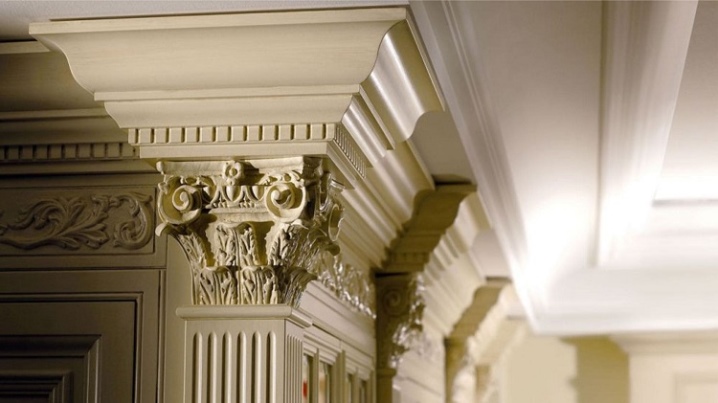
How to choose?
There are several key factors to consider when choosing and purchasing pilasters. The main ones include:
- dimensions (in this regard, it is necessary to focus on the distinctive characteristics of the room that you are decorating, respectively, it is imperative to make careful measurements);
- shape and color (when choosing pilasters according to these indicators, you must focus on your individual preferences, as well as on the style of the interior that you want to create);
- material of manufacture (first of all, it is necessary to determine what functional role the elements will play - decorative or practical - and only after that you can choose a specific material);
- manufacturer and place of purchase (you should only trust trusted companies, and direct purchase should be carried out in company stores and representative offices);
- cost (choose products from the middle price category).
If you take into account the factors described above when buying, you will be able to purchase pilasters that will serve you for a long period of time and will fit well into your interior, fulfilling their purpose with high quality.
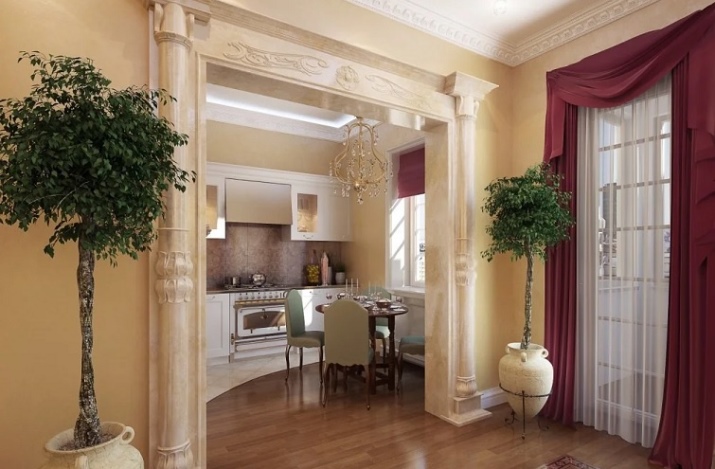
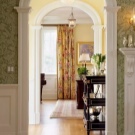
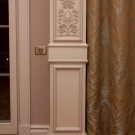

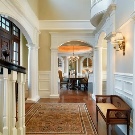
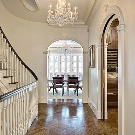
Beautiful examples
Let's take a look at some beautiful and stylish examples of the use of pilasters in the interior design of various rooms. You can copy these examples in the process of decorating your own home, or use them as a guide and source of inspiration.
- In this photo, you can see how the pilasters frame the arch, which is the entrance to the room. At the same time, this interior element beautifully emphasizes both the general style of the room and its individual elements (ceiling, chandelier, windows). Thus, it is the final detail.
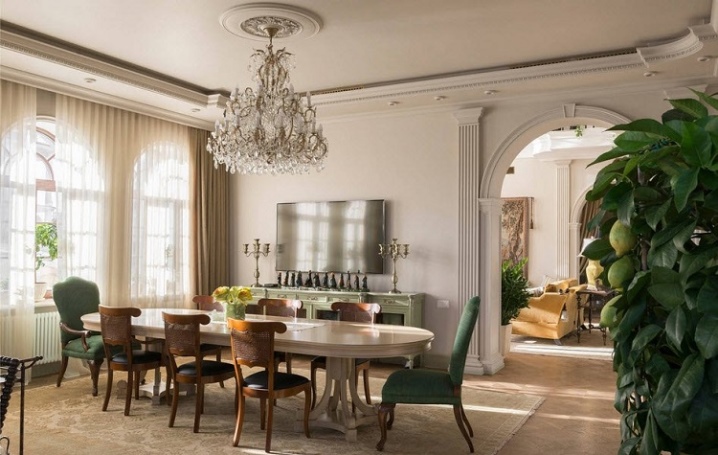
- In this image, you can see that the pilasters are arranged symmetrically in relation to each other. At the same time, their location - the bathroom - is especially unusual and unique. In this interior, the pilasters are well combined with the color of the rest of the interior elements.
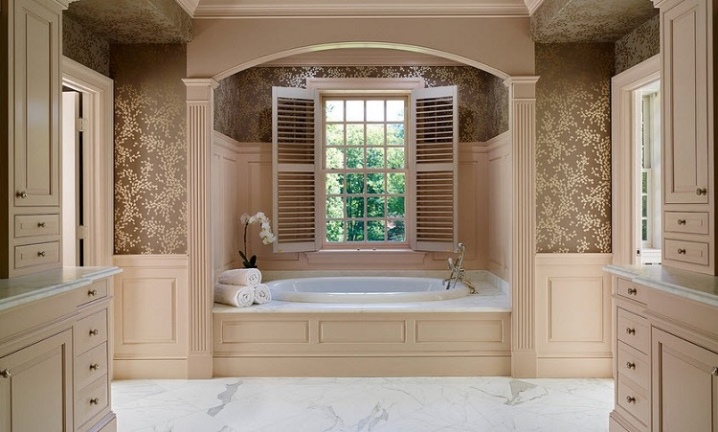
- A popular solution in the conditions of spacious living rooms is framing fireplaces with pilasters. At the same time, in this case, you should be especially careful when choosing the size of architectural elements (both length and width).
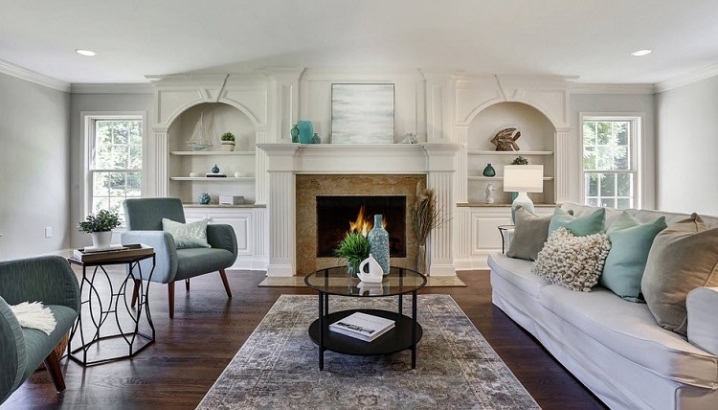
- In this interior, wooden pilasters look stylish and appropriate (even though these elements themselves have long gone out of fashion). If you choose such a room design, then you should immediately bear in mind the fact that it will require careful maintenance (regular dusting, polishing).
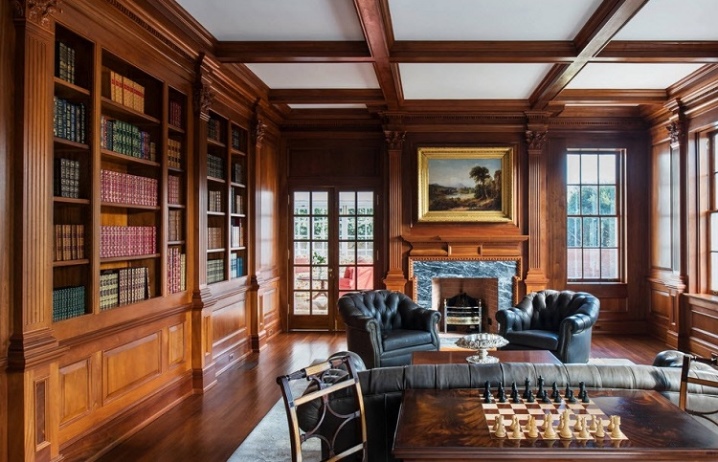
- Despite the fact that in general terms this style of interior design is similar to modern, pilasters fit perfectly into its framework. They set off a large number of interior details, while harmoniously combining the overall design and creating a single and holistic atmosphere.
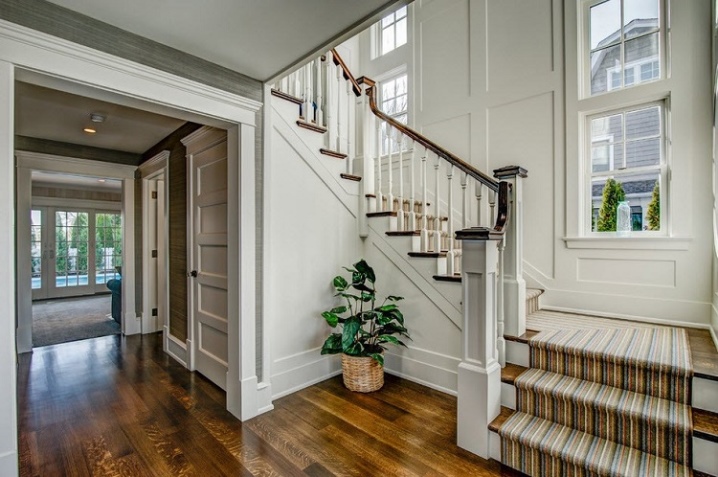
Thus, we were able to make sure that pilasters are an architectural element that performs a variety of functions... At the same time, due to the large variety of species, it is very important to carefully and responsibly approach their selection and acquisition, paying attention to all the distinctive characteristics.
For information on how to make plaster pilasters with your own hands, see the next video.













The comment was sent successfully.